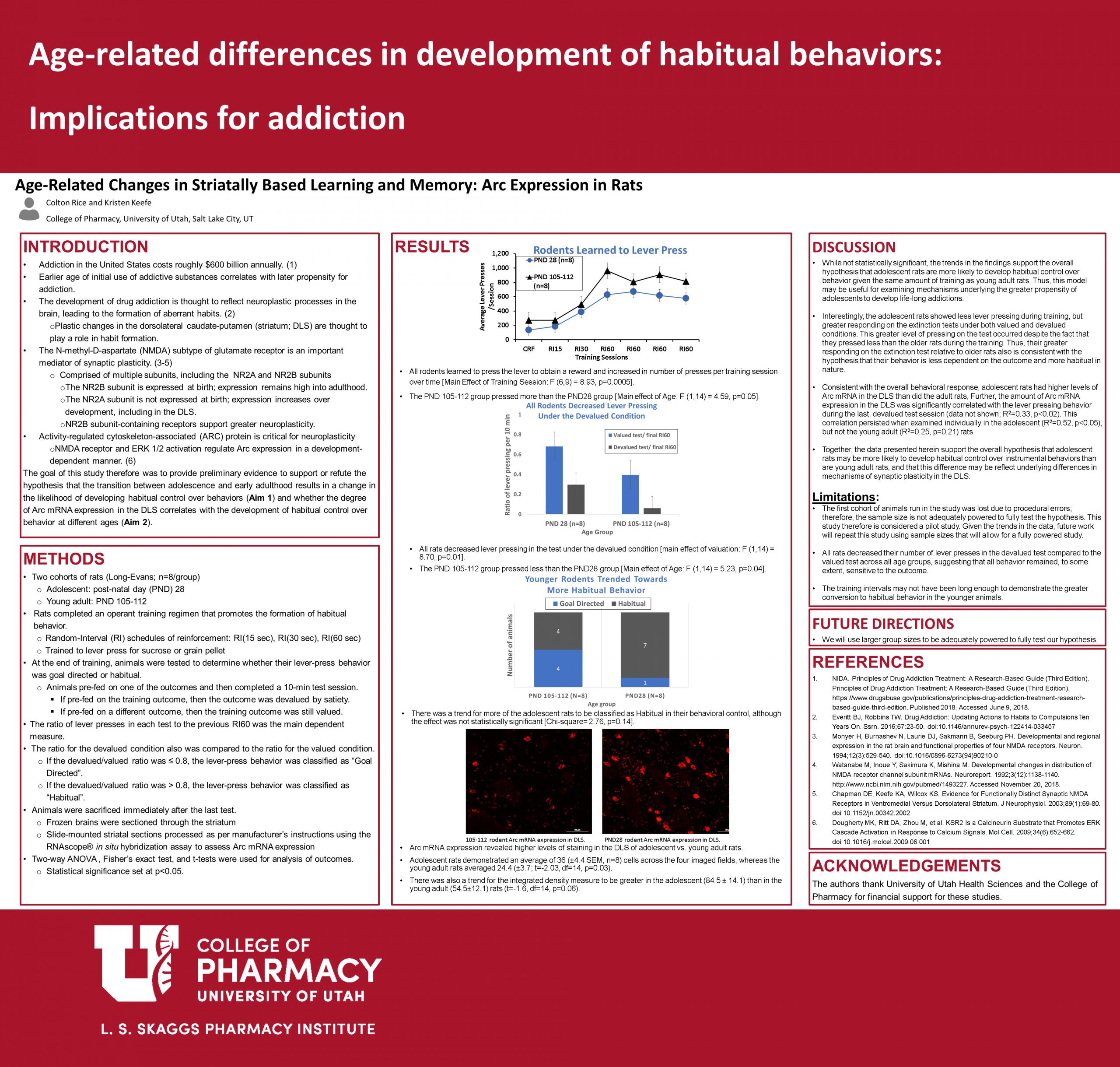Rice Colton
Age-related differences in development of habitual behaviors: Implications for addiction
April 29, 2020 in College of Pharmacy, Virtual Poster Session Spring 2020

Activity-regulated cytoskeleton-associated protein (Arc) is a molecule that plays a critical role in mediating synaptic plasticity, including in the dorsolateral striatum, an area critical for habitual control over behavior. We hypothesize that Arc may be a key regulator of synaptic plasticity in DLS underlying the development of habitual control over instrumental behavior and that differences in Arc expression across development may parallel a greater transition to habitual control over behavior in adolescents. Adolescent (post-natal day (PND) 28) and young adult (PND 105-112), male Long-Evans rats were trained to lever press for food reward (grain/sucrose) on a progressive random-interval schedule of reinforcement, then tested for goal-directed vs. habitual control over behavior using a sensory-specific devaluation procedure. Rats were then sacrificed immediately after extinction testing under devalued conditions, and the brains processed for radioactive in situ hybridization histochemistry for Arc mRNA expression in striatum. The Arc mRNA signal for each animal was then correlated to the ratio of responding under the devalued to valued condition. Adolescent rodents trended toward being classified as “habitual” more than the young adult rodents, and Arc mRNA expression was greater in the DLS of the PND 28 rodents, though not statistically significant. We conclude that younger individuals may have a heightened ability to form habits, perhaps due to an increased level of Arc mRNA expression in DLS. This propensity may explain why younger individuals are at a heightened risk of developing long-term addictions.
